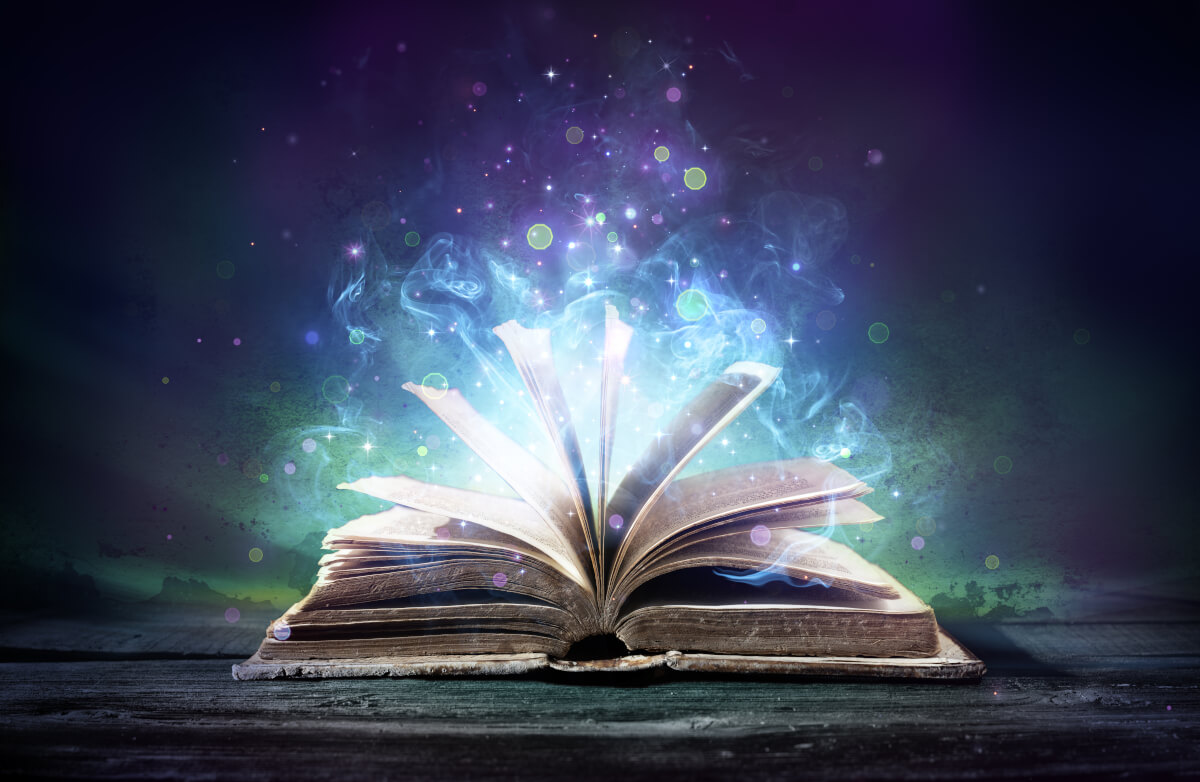Magical realism is a genre that sets supernatural abilities or creatures against the backdrop of the real world. Real-world places exist in these stories, but they do so alongside the likes of wizards, goblins, and an expansive shadow world filled with magic that lies just beyond our own. The best magical realism novels tackle social commentary through the lens of everyday magical occurrences.
Magic, along with superpowers, is a catch-all narrative trope that encompasses a singular theme: power that is held within individuals. Perhaps a sorcerer casts a spell to let his friends fly like birds to make a package delivery on time, or maybe students need to chase down a dragon for their homework. No matter the set-up, magical realism tackles the idea that magic cannot solve all of one’s problems in life and must be balanced against the needs of normal everyday living.
In a sense, “Spider-Man” is an example of magical realism. Peter Parker has spectacular powers, but he’s also always broke and needs to pay his rent as a freelance photographer in New York City. Lev Grossman’s “The Magicians” is another title where magical characters “retreat” into the mundane world when the pressures of the magical world are too much to bear. Even Disney’s hit 2021 animated film “Encanto” focuses on the interactions between those “gifted” with magical abilities and those who must live as normal people. These themes along with others like civic responsibility, are frequently the focus of character conflict in magical realism books.
As characters explore their own blossoming powers, they also discover their place in the world as adults. There are many books that explore the impact of magic in the real world, and they can be some of the most thought-provoking works to peruse. Are you ready for an arcane voyage through adjacent mystical realms? We gathered our trusted sources to rank the top five best magical realism books of all time. Let us know your favorites in the comments below!

The List: Best Magical Realism Books, According to Experts
1. “One Hundred Years of Solitude” by Gabriel García Márquez (1967)
“One Hundred Years of Solitude” follows the lives of José Buendia’s family, who are cursed with magic abilities. Set in Colombia, this book is an important entry for Spanish language literature. Culture Frontier raves, “Throughout the novel, we learn of José’s exploits, as well as those of the Buendia generations to follow…Ultimately, ‘One Hundred Years of Solitude’ is a shining example of magical realism, as the novel incorporates magical elements into a realist framework, and itself challenges our understanding of complex phenomena like history and time.”

“Gabriel Garcia Marquez is perhaps the most famous and influential author in the Magical Realism genre. His novels, including ‘One Hundred Years of Solitude,’ ‘Love in the Time of Cholera,’ and ‘Chronicle of a Death Foretold,’ have inspired generations of writers and readers around the world. His use of Magical Realism to explore themes such as love, death, and politics and the vividness of his writing has made him a literary icon,” praises RT Book Reviews.
Hooked to Books exclaims, “This epic tale is packed with fascinating characters, plenty of symbolism, and glimmers of magic amongst the mundane. This landmark story has been described by many as a ‘fairytale for adults’ and is regarded as the most influential novel to come out of Latin America to date.”
2. “Midnight’s Children” by Salman Rushdie (1981)
“Midnight’s Children” is a story that could fit into the world of Marvel’s “X-men.” Mutant children are born with fantastic powers that set them apart from society against the backdrop of civil turmoil. Shortform says, “Saleem Sinai was born at midnight, the midnight of India’s independence, and found himself mysteriously ‘handcuffed to history’ by the coincidence. He is one of 1,001 children born at the midnight hour, each of them endowed with an extraordinary talent — and whose privilege and curse it is to be both master and victims of their times.”

Read This Twice describes, “Born at the stroke of midnight on August 15, 1947, he’s one of 1,001 ‘midnight’s children’ endowed with special powers, and discovers he was switched at birth with another child. As he attempts to gather the other gifted children for a parliament to save the nation, he faces dangerous complications from a brutish killer. Through it all, Rushdie’s prose is both hilarious and heartbreaking, filled with exuberant language and allusions to Bombay’s film industry.”
“As [Saleem] grows up, he begins to realize that his life is inextricably linked to that of his nation. Everything from his health to his finances perfectly parallel that of his country. And even more remarkable is the telepathic powers that link Saleem with India’s 1,000 other ‘midnight’s children,’ who were all born in that fateful hour and who all hold magical gifts,” elaborates Penguin Random House.
3. “Life of Pi: A Novel” by Yann Martel (2001)
“Life of Pi” feels like a fever dream of conflicting ideas at times. In a literary analysis sense, the book can be interpreted as either heavy metaphor or magic. Beyond the Bookends comments, “When a boat sinks in the Pacific, the only survivors are a 16-year-old boy named Pi, an orangutan, a hyena, a Bengal tiger, and a zebra. And while this book was written less than 20 years ago, it is already a modern classic.”

Book Riot adds, “Molitor ‘Pi’ Patel, a Tamil boy from Pondicherry, is on a huge ship with his family when it wrecks. He is left on a lifeboat with a bengal tiger. ‘Life of Pi’ is a tale about hope and storytelling that will leave you thinking about what it takes to survive.”
“After a shipwreck, Pi is stranded for 227 days on a boat with a Bengal tiger named Richard Parker. Yann Martel’s award-winning book is a stunning (and surprising) story of survival and loss, perseverance, and human nature, that I thought about for a long, long time after reading it,” details Reader’s Digest.
4. “Red Sorghum” by Mo Yan (1986)
“Red Sorghum” is an important work of fiction from Chinese author Mo Yan that was originally published as a series of novellas. This book combines superstition with historical events. Mental Floss explains, “In the Chinese novel ‘Red Sorghum,’ published in 1986, author Mo Yan weaves folklore into a story about real-life events like the Second Sino-Japanese War… Though it incorporated fantastical elements, ‘Red Sorghum’ was more realistic in some ways to much of the military fiction published in China at the time of its release. Mo Yan wrote ‘Red Sorghum’ as a counterpoint to the propaganda he studied in college in the 1980s.”

Read This Twice offers, “An epic family saga set in 1930s China, ‘Red Sorghum’ tells the story of three generations battling the Japanese invaders and each other. Through flashbacks, readers witness a landscape of beauty and horror as fable and history collide to create an entirely unique and unforgettable work of fiction. This novel has won numerous literary awards in China and inspired an Oscar-nominated film. Don’t miss out on this legendary read.”
Reader’s Digest states, “‘Red Sorghum’ centers on three generations of the Shandong family as they move from red sorghum liquor producers to freedom fighters of the second Sino-Japanese war. Through a series of flashbacks, the narrator recounts the lives of his grandparents and the horrors of war… Yan became the first Chinese author to win the coveted Nobel Prize in Literature in 2012.”
5. “Kafka on the Shore” by Haruki Murakami (2002)
“Kafka on the Shore” is a highly structured examination of life events as a metaphor. This surreal narrative contains odd happenings that are most easily explained as magic. Culture Frontier claims, “The novel alternates between odd-numbered chapters recounting Kafka’s story, and even-numbered chapters to tell the story of Nakata, an elderly man who can speak with cats. As you can see, this is a strange and beguiling story that has captivated many readers!”

Hooked to Books relates, “Murakami’s ‘Kafka on the Shore’ follows two very different characters whose lives are mysteriously synced together. Kafka is a teenage boy who has run away from home after years of living like a shadow in his father’s house… Meanwhile, Nakata, an aging man with learning disabilities, is content living a sheltered life in a suburb of Tokyo… As the story unfolds, Kafka and Nakata are mysteriously drawn to each other as they explore their bizarre worlds, destined to intertwine.”
“Kafka Tamura runs away from home to search for his missing mother and sister, as well as to escape an oedipal prophecy—an aging man named Nakata is drawn to him for reasons he can’t put a finger on. Cats talk and fish fall from the sky in one of Murakami’s many classics,” reviews Book Riot.
You might also be interested in:
Sources:
- Culture Frontier
- RT Book Reviews
- Hooked to Books
- Shortform
- Read This Twice
- Penguin Random House
- Beyond the Bookends
- Book Riot
- Reader’s Digest
- Mental Floss
Note: This article was not paid for nor sponsored. StudyFinds is not connected to nor partnered with any of the brands mentioned and receives no compensation for its recommendations.

What about the The House of the Spirits by Isabel Allende?